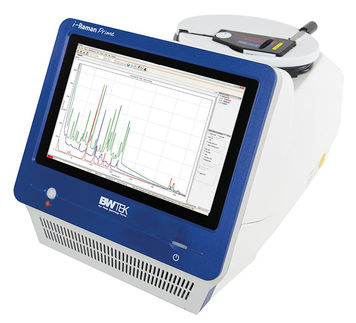| V-myc myelocytomatosis viral oncogene homolog (avian)
|
|
|
| PDB rendering based on 1nkp.
|
| Available structures: 1nkp
|
| Identifiers
|
| Symbol(s)
| MYC; c-Myc
|
| External IDs
| OMIM: 190080 MGI: 97250 Homologene: 31092
|
| Gene Ontology
|
| Molecular Function:
| • transcription factor activity
• protein binding
|
| Cellular Component:
| • nucleus
• spindle
|
| Biological Process:
| • release of cytochrome c from mitochondria
• DNA fragmentation during apoptosis
• regulation of transcription, DNA-dependent
• regulation of transcription from RNA polymerase II promoter
• cellular iron ion homeostasis
• caspase activation
• cell cycle arrest
• positive regulation of cell proliferation
• induction of apoptosis by intracellular signals
• activation of pro-apoptotic gene products
• negative regulation of survival gene product activity
• response to radiation
• regulation of apoptosis
|
|
| Orthologs
|
|
| Human
| Mouse
|
| Entrez
| 4609
| 17869
|
| Ensembl
| na
| ENSMUSG00000022346
|
| Uniprot
| na
| O88594
|
| Refseq
| XM_001129632 (mRNA)
XP_001129632 (protein)
| NM_010849 (mRNA)
NP_034979 (protein)
|
| Location
| na
| Chr 15: 61.82 - 61.82 Mb
|
| Pubmed search
| [1]
| [2]
|
Myc (cMyc) is a protooncogene, which is overexpressed in a wide range of human cancers. When it is specifically-mutated, or overexpressed, it increases cell proliferation and functions as an oncogene. Myc gene encodes for a transcription factor that regulates expression of 15% of all genes [1] through binding on Enhancer Box sequences (E-boxes) and recruiting histone acetyltransferases (HATs). Myc belongs to Myc family of transcription factors, which also includes N-Myc and L-Myc genes. Myc-family transcription factors contain the bHLH/LZ (basic Helix-Loop-Helix Leucine Zipper) domain.
Discovery
Myc gene was first discovered in Burkitt's lymphoma patients. In Burkitt's lymphoma, cancer cells show chromosomal translocations, in which Chromosome 8 is frequently involved. Cloning the break point of the fusion chromosomes revealed a gene that was similar to myelocytomatosis viral oncogene (v-Myc). Thus, the newfound cellular gene was named c-Myc.
Structure
Myc belongs to Myc family of transcription factors, which also includes N-Myc and L-Myc genes. Myc family of transcription factors contain bHLH/LZ (basic Helix-Loop-Helix Leucine Zipper) domain. Myc protein, through its bHLH domain can bind to DNA, while the leucine zipper domain allows the dimerisation with its partner Max, another bHLH transcription factor.
Molecular Function
Myc protein is a transcription factor that activates expression of a great number of genes through binding on consensus sequences (Enhancer Box sequences (E-boxes)) and recruiting histone acetyltransferases (HATs). It can also act as a transcriptional repressor. By binding Miz-1 transcription factor and displacing the p300 co-activator, it inhibits expression of Miz-1 target genes.
Myc is activated upon various mitogenic signals such as Wnt, Shh and EGF (via the MAPK/ERK pathway).
By modifying the expression of its target genes, Myc activation results in numerous biological effects. The first to be discovered was its capability to drive cell proliferation (upregulates cyclins, downregulates p21), but it also plays a very important role in regulating cell growth (upregulates ribosomal RNA and proteins), apoptosis (upregulates Bcl-2), differentiation and stem cell self-renewal. Myc is a very strong proto-oncogene and it is very often found to be upregulated in many types of cancers.
Animal Models
During the discovery of Myc gene, it was realized that chromosomes that translocate to Chromosome 8 contained immunoglobulin genes at the break point. Enhancers that normally drive expression of immunoglobin genes, now lead to overexpression of Myc proto-oncogene in lymphoma cells. To study the mechanism of tumorigenesis in Burkitt's lymphoma by mimicking expression pattern of Myc in these cancer cells, transgenic mouse models were developed. Myc gene placed under the control of IgM heavy chain enhancer in transgenic mice gives rise to mainly lymphomas. Later on, to study effects of Myc in other types of cancer, transgenic mice that overexpress Myc in different tissues (liver, breast) were also made. In all these mouse models overexpression of Myc causes tumorigenesis, illustrating the potency of Myc oncogene.
References
- ^ Gearhart J, Pashos EE, Prasad MK, Pluripotency Redeux -- advances in stem-cell researcg, N Engl J Med 357(15):1469
Further reading
- Ruf IK, Rhyne PW, Yang H, et al. (2002). "EBV regulates c-MYC, apoptosis, and tumorigenicity in Burkitt's lymphoma.". Curr. Top. Microbiol. Immunol. 258: 153-60. PMID 11443860.
- Lüscher B (2001). "Function and regulation of the transcription factors of the Myc/Max/Mad network.". Gene 277 (1-2): 1-14. PMID 11602341.
- Hoffman B, Amanullah A, Shafarenko M, Liebermann DA (2002). "The proto-oncogene c-myc in hematopoietic development and leukemogenesis.". Oncogene 21 (21): 3414-21. doi:10.1038/sj.onc.1205400. PMID 12032779.
- Pelengaris S, Khan M, Evan G (2002). "c-MYC: more than just a matter of life and death.". Nat. Rev. Cancer 2 (10): 764-76. doi:10.1038/nrc904. PMID 12360279.
- Nilsson JA, Cleveland JL (2004). "Myc pathways provoking cell suicide and cancer.". Oncogene 22 (56): 9007-21. doi:10.1038/sj.onc.1207261. PMID 14663479.
- Dang CV, O'donnell KA, Juopperi T (2005). "The great MYC escape in tumorigenesis.". Cancer Cell 8 (3): 177-8. doi:10.1016/j.ccr.2005.08.005. PMID 16169462.
- Dang CV, Li F, Lee LA (2007). "Could MYC induction of mitochondrial biogenesis be linked to ROS production and genomic instability?". Cell Cycle 4 (11): 1465-6. PMID 16205115.
- Coller HA, Forman JJ, Legesse-Miller A (2007). ""Myc'ed messages": myc induces transcription of E2F1 while inhibiting its translation via a microRNA polycistron.". PLoS Genet. 3 (8): e146. doi:10.1371/journal.pgen.0030146. PMID 17784791.
- Astrin SM, Laurence J (1992). "Human immunodeficiency virus activates c-myc and Epstein-Barr virus in human B lymphocytes.". Ann. N. Y. Acad. Sci. 651: 422-32. PMID 1318011.
- Bernstein PL, Herrick DJ, Prokipcak RD, Ross J (1992). "Control of c-myc mRNA half-life in vitro by a protein capable of binding to a coding region stability determinant.". Genes Dev. 6 (4): 642-54. PMID 1559612.
- Iijima S, Teraoka H, Date T, Tsukada K (1992). "DNA-activated protein kinase in Raji Burkitt's lymphoma cells. Phosphorylation of c-Myc oncoprotein.". Eur. J. Biochem. 206 (2): 595-603. PMID 1597196.
- Seth A, Alvarez E, Gupta S, Davis RJ (1992). "A phosphorylation site located in the NH2-terminal domain of c-Myc increases transactivation of gene expression.". J. Biol. Chem. 266 (35): 23521-4. PMID 1748630.
- Takahashi E, Hori T, O'Connell P, et al. (1991). "Mapping of the MYC gene to band 8q24.12----q24.13 by R-banding and distal to fra(8)(q24.11), FRA8E, by fluorescence in situ hybridization.". Cytogenet. Cell Genet. 57 (2-3): 109-11. PMID 1914517.
- Blackwood EM, Eisenman RN (1991). "Max: a helix-loop-helix zipper protein that forms a sequence-specific DNA-binding complex with Myc.". Science 251 (4998): 1211-7. PMID 2006410.
- Gazin C, Rigolet M, Briand JP, et al. (1986). "Immunochemical detection of proteins related to the human c-myc exon 1.". EMBO J. 5 (9): 2241-50. PMID 2430795.
- Lüscher B, Kuenzel EA, Krebs EG, Eisenman RN (1989). "Myc oncoproteins are phosphorylated by casein kinase II.". EMBO J. 8 (4): 1111-9. PMID 2663470.
- Finver SN, Nishikura K, Finger LR, et al. (1988). "Sequence analysis of the MYC oncogene involved in the t(8;14)(q24;q11) chromosome translocation in a human leukemia T-cell line indicates that putative regulatory regions are not altered.". Proc. Natl. Acad. Sci. U.S.A. 85 (9): 3052-6. PMID 2834731.
- Showe LC, Moore RC, Erikson J, Croce CM (1987). "MYC oncogene involved in a t(8;22) chromosome translocation is not altered in its putative regulatory regions.". Proc. Natl. Acad. Sci. U.S.A. 84 (9): 2824-8. PMID 3033665.
- Guilhot S, Petridou B, Syed-Hussain S, Galibert F (1989). "Nucleotide sequence 3' to the human c-myc oncogene; presence of a long inverted repeat.". Gene 72 (1-2): 105-8. PMID 3243428.
- Hann SR, King MW, Bentley DL, et al. (1988). "A non-AUG translational initiation in c-myc exon 1 generates an N-terminally distinct protein whose synthesis is disrupted in Burkitt's lymphomas.". Cell 52 (2): 185-95. PMID 3277717.
| Transcription factors and intracellular receptors |
|---|
| (1) Basic domains |
| (1.1) Basic leucine zipper (bZIP) |
Activating transcription factor (1, 2, 3, 4, 5, 6) • AP-1 (c-Fos, FOSB, FOSL1, FOSL2, c-Jun, JUNB, JUND) • BACH (1, 2) • C/EBP (α, β, γ, δ, ε, ζ) • CREB (1, 3) • GABPA • MAF (B, F, G, K) • NRL • NRF1 • XBP1 |
| (1.2) Basic helix-loop-helix (bHLH) |
ATOH1 • AhR • AHRR • ARNT • ASCL1 • BMAL (ARNTL, ARNTL2) • CLOCK • HIF (1A, 3A) • Myogenic regulatory factors (MyoD, Myogenin, MYF5, MYF6) • NEUROD1 • Twist • USF1 |
| (1.3) bHLH-ZIP |
Myc • MITF • SREBP (1, 2) |
| (1.6) Basic helix-span-helix (bHSH) |
AP-2 |
|
|---|
(2) Zinc finger
DNA-binding domains |
| (2.1) Nuclear receptor (Cys4) |
subfamily 1 (Thyroid hormone (α, β), CAR, FXR, LXR (α, β), PPAR (α, β/δ, γ), PXR, RAR (α, β, γ), ROR (α, β, γ), Rev-ErbA (α, β), VDR) • subfamily 2 (COUP-TF (I, II), Ear-2, HNF4 (α, γ), PNR, RXR (α, β, γ), Testicular receptor (2, 4), TLX) • subfamily 3 (Steroid hormone (Estrogen (α, β), Estrogen related (α, β, γ), Androgen, Glucocorticoid, Mineralocorticoid, Progesterone)) • subfamily 4 NUR (NGFIB, NOR1, NURR1) • subfamily 5 (LRH-1, SF1) • subfamily 6 (GCNF) • subfamily 0 (DAX1, SHP) |
| (2.2) Other Cys4 |
GATA (1, 2, 3, 4, 5, 6) |
| (2.3) Cys2His2 |
General transcription factors (TFIIA, TFIIB, TFIID, TFIIE, TFIIF, TFIIH: 1, 2) • GLI-Krüppel family (1, 2, 3, YY1) • KLF (2, 4, 5, 6, 10, 11, 12, 13) • Sp1 • zinc finger (3, 35, 43, 146, 148, 165, 217, 268, 281, 350) • Zbtb7 (7A) • ZBT (16, 17, 33) |
| (2.4) Cys6 |
HIVEP1 |
|
|---|
(3) Helix-turn-helix
domains |
| (3.1) Homeo domain |
ARX • Homeobox (A1, A3, A4, A5, A7, A9, A10, A11, A13, B1, B2, B3, B4, B5, B6, B7, B8, B9, B13, C4, C6, C8, C9, C13, D1, D3, D4, D9, D10, D11, D12, D13) • NANOG • NKX (2-1, 2-5, 3-1) • POU domain (PIT-1, BRN-3: 1, 2, Octamer transcription factor: 1, 2, 3/4, 6, 7) |
| (3.2) Paired box |
PAX (1, 2, 3, 4, 5, 6, 7, 8, 9) |
| (3.3) Fork head / winged helix |
E2F (1, 2, 3, 4, 5) • FOX proteins (C1, C2, E1, G1, H1, L2, M1, N3, O3, O4, P1, P2, P3) |
| (3.4) Heat Shock Factors |
HSF1 |
| (3.5) Tryptophan clusters |
ELF (4, 5) • Interferon regulatory factors (1, 2, 3, 4, 5, 6, 7, 8) • MYB |
| (3.6) TEA domain |
transcriptional enhancer factor 1, 2 |
|
|---|
(4) β-Scaffold factors with
minor groove contacts |
| (4.1) Rel homology region |
NF-κB (NFKB1, NFKB2, REL, RELA, RELB) • NFAT (5, C1, C2, C3, C4) |
| (4.2) STAT |
STAT (1, 2, 3, 4, 5, 6) |
| (4.3) p53 |
p53 |
| (4.4) MADS box |
Mef2 (A, B, C, D) • SRF |
| (4.7) High mobility group |
HNF (1A, 1B) • LEF1 • SOX (3, 4, 6, 9, 10, 13, 18) • SRY • SSRP1 |
| (4.10) Cold-shock domain |
CSDA |
| (4.11) Runt |
CBF (RUNX1, RUNX2, RUNX3) |
|
|---|
(0) Other
transcription factors |
| (0.2) HMGI(Y) |
HMGA (1, 2) |
| (0.3) Pocket domain |
Rb • RBL1 • RBL2 |
| (0.6) Miscellaneous |
ARID (1A, 1B, 2, 3A, 3B, 4A) • CAP • Rho/Sigma • R-SMAD |
|
|---|
|







